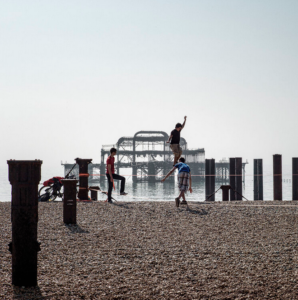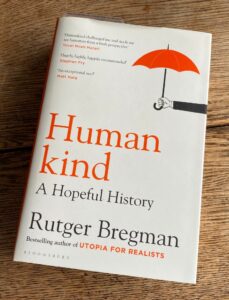Quote of the Day
”There’s only one corner of the universe you can be certain of improving, and that’s your own self.”
- Aldous Huxley, 1945
Musical alternative to the morning’s radio news
Rachmaninov plays Händel ~ The Harmonious Blacksmith
Why Jeff Bezos’s net worth is $200 billion
Matt Stoller is a determined campaigner for regulation of tech monopolies. He’s particularly sharp on Amazon’s strategies and tactics. This time he has a terrific analysis of the company’s ingenuity in responding to the loss of an important court case.
The background is this: An Amazon customer bought a laptop battery from a Chinese third-party seller on Amazon. The battery exploded, injuring her. She sued Amazon. The company tried to deny liability — including trying a preposterous legal stunt saying that it was protected by Section 230 of the Communications Decency Act which exempts online platforms from liability for speech published on their platforms. The Judge declined to accept that selling an exploding battery constituted “speech”.
Anyway, the case went all the way in the Californian courts, and Amazon lost. So what did it do next? Stoller takes up the story:
What speaks to the savvy of Amazon is how the corporation reacted to its loss. After the court ruled, Amazon public policy lead (and former FTC and DOJ Antitrust official) Brian Huseman then swung into action. Last Friday, he published a blog post reversing Amazon’s position.
Not only did Amazon support legislative action to hold itself strictly liable for products sold on its platform, Huseman wrote, but it would support legislation to go beyond the court’s decision. Huseman said Amazon supported Stone’s bill on online marketplace liability, but Amazon wanted it to be even stronger and broader. Amazon, after being held liable in court for hurting someone by selling defective products, would pose in a legislative fight as the consumer’s biggest champion.
Huseman is an increasingly important player in the Amazon public policy shop, and as Amazon is a creature of public policy, it makes him one of the more important executives at the corporation. Former Obama press secretary Jay Carney, who ostensibly runs global affairs for Amazon, is a public relations guy and glad-handler of political VIPs, whereas Huseman, though behind the embarrassing HQ2 fiasco, does understand law.
The California bill, AB 3262 in its original form [which Stoller’s organization endorsed in its report on Amazon], would have forced Amazon to take responsibility for what merchants sold on its platform, but the court decision essentially took care of this problem for the legislators. .
Huseman, recognizing that Amazon will have take responsibility for what it sold, in turned asked the legislature to apply strict liability to anyone remotely connected to selling things online. Not only should Amazon be held liable for products its merchants sell, wrote Huseman, but all online platforms or websites should be liable, not just for helping to place products into the marketplace but under any business model. The ultimate language of the legislation included not only placing products into the marketplace, but ‘facilitating’ the placing of such products into the marketplace.
Note the significance of this. If this were enacted it would means that every dog and pony selling anything online would be subject to strict liability. And guess what that would do to the dogs and ponies? The outfit with the deepest pockets and the best lawyers (aka Amazon) would finally be the only game in town.
Which is why Bezos winds up with a net worth of $200B.
George Packer: How Biden can lose
Grim — really grim — and perceptive piece. The nub of it is that protests about police violence against black citizens creates a no-win trap for the Democrats.
The day before, on Monday, the Republicans began their remote convention. The simultaneous mayhem in Kenosha seemed like part of the script, as it played into their main theme: that Biden is a tool of radical leftists who hate America, who want to bring the chaos of the cities they govern out to the suburbs where the real Americans live. The Republicans won’t let such an opportunity go to waste. “Law and order are on the ballot,” Vice President Mike Pence said on Wednesday night. Other speakers were harsher.
It’s no use dismissing their words as partisan talking points. They are effective ones, backed up by certain facts. Trump will bang this loud, ugly drum until Election Day. He knows that Kenosha has placed Democrats in a trap. They’ve embraced the protests and the causes that drive them. The third night of the Democratic convention was consumed with the language and imagery of protest—as if all Americans watching were activists.
On Monday, the day after Blake’s shooting, Biden and his vice-presidential nominee, Senator Kamala Harris, released statements expressing outrage. The next day, Biden’s spokesperson released a statement opposing “burning down communities and needless destruction.” And on Wednesday, Biden, after speaking with the Blake family, condemned both the initial incident and the subsequent destruction. “Burning down communities is not protest,” he pleaded in a video. “It’s needless violence.” He said the same after George Floyd’s killing.
How many Americans have heard him?
The Irish Passport podcast on #golfgate
This episode is an hour long, but worth a listen: it provides a really good insight into why the flouting of social-distancing rules by some of the Irish Establishment figures (who had promulgated the said rules) has caused such outrage in Ireland.
Seeing like a city: how tech became urban
This scholarly — and open access academic article, by the prominent urban sociologist Sharon Zukin, is the best survey article I’ve seen on the complicated infatuation of city planners and urban elites with tech companies. It asks why so many cities have failed to resist the allure of Big Tech and digital capitalism (i.e. lost their marbles). And it examines what is lost as city administrations keep genuflecting before the gods of “innovation and entrepreneurship.”
The Abstract reads:
The emergence of urban tech economies calls attention to the multidimensional spatiality of ecosystems made up of people and organizations that produce new digital technology. Since the economic crisis of 2008, city governments have aggressively pursued economic growth by nurturing these ecosystems. Elected officials create public-private-nonprofit partnerships to build an “innovation complex” of discursive, organizational, and geographical spaces; they aim not only to jump-start economic growth but to remake the city for a new modernity. But it is difficult to insert tech production space into the complicated urban matrix. Embedded industries and social communities want protection from expanding tech companies and the real estate developers who build for them. City council members, state legislators, and community organizations oppose the city government’s attempts to satisfy Big Tech companies. While the city’s density magnifies conflicts of interest over land-use and labor issues, the covid-19 pandemic raises serious questions about the city’s ability to both oppose Big Tech and keep creating tech jobs.
Longish read. Not for everybody, but if you’re interested in tech and society (as I am) it’s good stuff.
This blog is also available as a daily email. If you think this might suit you better, why not subscribe? One email a day, delivered to your inbox at 7am UK time. It’s free, and there’s a one-click unsubscribe if your decide that your inbox is full enough already!
5:










